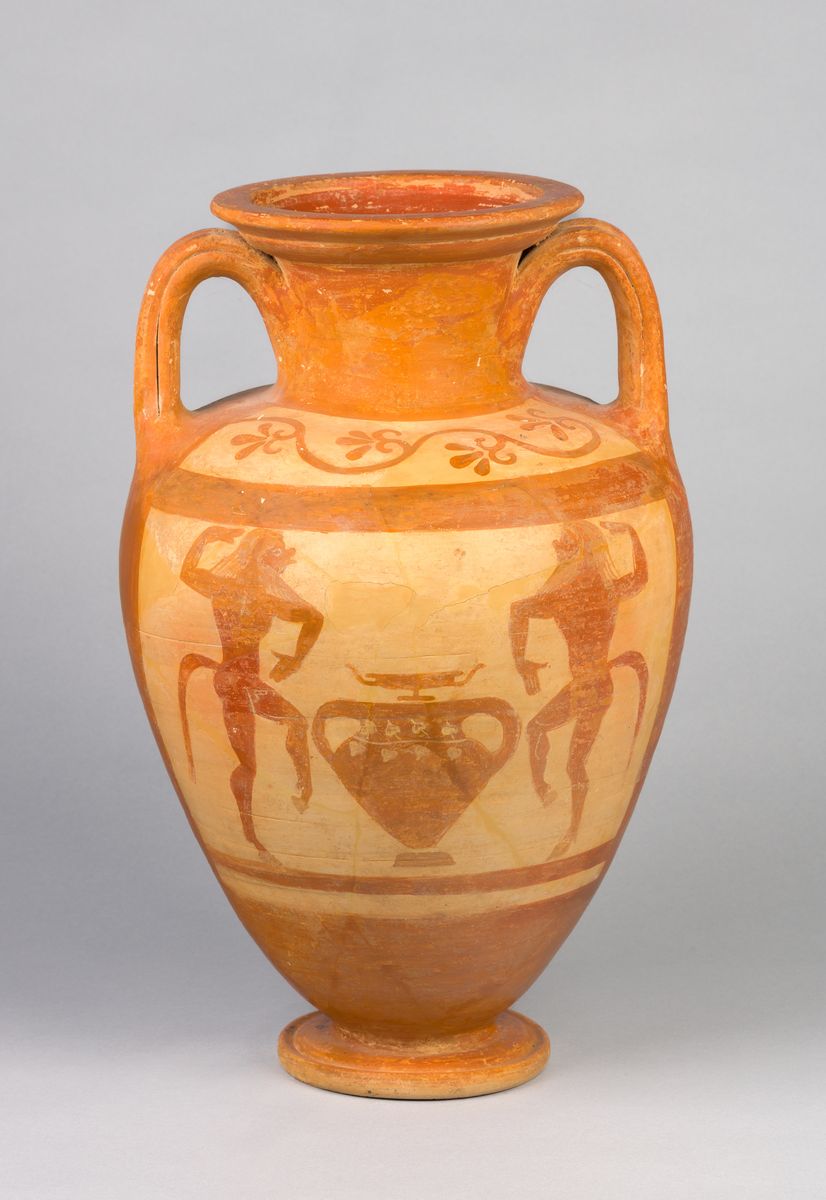
Amphora (jar) with dancing satyrs
Culture: Etruscan
Date: early 5th century B.C.
Medium: Terracotta
Dimensions:
height: 16 9/16 in. (42.1 cm)
diameter: 10 11/16 in. (27.1 cm)
diameter of rim: 6 7/8 in. (17.4 cm)
diameter of foot: 5 1/4 in. (13.3 cm)
Credit Line: San Antonio Museum of Art, purchased with funds provided by Gilbert M. Denman, Jr.
Object number: 85.119.8
Provenance: sold by Galerie Günter Puhze, Freiberg, to San Antonio Museum of Art, 1985
Published References
Galerie Gunter Puhze, "Kunst der Antike," cat. 6 (Freiburg, 1985) 19, no. 197
H.A. Shapiro, C.A. Picon, G.D. Scott, III, ed., Greek Vases in the San Antonio Museum of Art (San Antonio, 1995) p. 71, no. 29
B. Henriksson, Satyrs in Etruria: A Study of a Theme on Etruscan Black-Figure Vases, Ph.D. diss, Göteborg University (2008), 96-97, 102, 159, pl. 170.
Label Text
The two figures on each side of this amphora are recognizable as satyrs, the part-human, part-animal companions of the god of wine, Dionysos, by their horses’ ears, tails, and hooves. The satyrs dance on either side of a large krater, a vessel for mixing wine and water. A kylix, a cup for drinking wine, rests on the rim of each krater. Amphoras were used to store wine, as well as other foodstuffs, and the satyrs and wine vessels may reflect this function of the vase. (J. Powers, 2008)
On view
In Collection(s)
The San Antonio Museum of Art is in the process of digitizing its permanent collection. This electronic record was created from historic documentation that does not necessarily reflect SAMA's complete or current knowledge about the object. Review and updating of such records is ongoing.

 This resource has been made possible in part by the National Endowment for the Humanities: Exploring the Human Endeavor.
This resource has been made possible in part by the National Endowment for the Humanities: Exploring the Human Endeavor.
